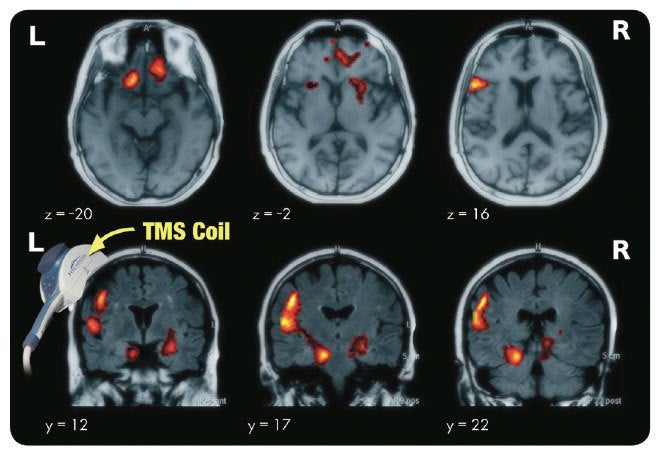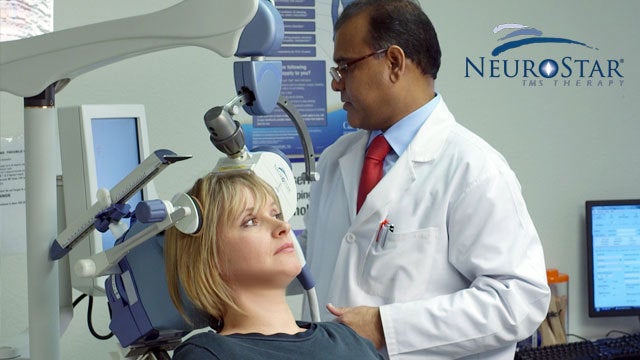
For U.S. adults, dependency rates are currently 12 percent for alcohol and 2-3 percent for illicit drugs. Countless medical therapies exist for addiction and related depression — but what if medications don’t work? It’s estimated that 10-30 percent of individuals don’t respond to antidepressants, which leaves countless individuals living with depression and substance dependence by the wayside.
Fortunately, there is hope with a promising therapy called transcranial magnetic stimulation therapy, or TMS, which is FDA-approved for those with TRD (treatment-resistant depression). What surfaced as an experimental treatment nearly a decade ago is now a recognized therapy used by the Mayo Clinic, the Johns Hopkins Hospital, and more.
What is TMS Therapy?
TMS therapy is a non-invasive outpatient procedure typically performed in a psychiatrist’s office. The therapy stimulates nerve cells in the brain with magnetic fields applied through an electromagnetic coil. Aside from addiction and depression, TMS therapy can also treat conditions like anxiety, OCD, bipolar disorder, and chronic pain.
The treatment doesn’t require any anesthesia or major restrictions. Best of all, this therapy doesn’t involve the side effects associated with many medications, and there appear to be no major long-term side effects so far. Minor side effects the day of treatment can include mild headaches, tearing, and muscle tension at the application site on the scalp.
What Happens During a TMS Therapy Session?

TMS Therapy Session
During the procedure, a doctor applies altering magnetic fields to a patient’s prefrontal cortex in the brain. These fields stimulate cells in the brain, which then stimulate even deeper cells that regulate mood, activity, and more. Ultimately, treatments may restore normal function in the affected areas of the brain.
During treatment, the magnetic pulses only directly affect the prefrontal cortex (about five centimeters into the brain), which is about the same strength as an MRI. One reason researchers believe TMS therapy is effective to treat addiction is that TMS also affects the brain’s limbic system, which regulates cravings.
Scientists are still trying to parse out the exact mechanisms of TMS therapies, but studies have been extremely promising so far. A typical treatment course involves daily treatments (five days per week) for 4-6 weeks. The treatment typically takes less than an hour to complete.
Is Brain Stimulation Really Effective?
To date, TMS therapy has shown incredible promise. The therapy achieved FDA approval in 2008, and since, researchers have collected impressive results on its long-term efficacy. One year after treatment, some studies demonstrate that 62-68 percent of patients continue to see improvement, while others report 45 percent complete remission.
For countless patients in the U.S. with depression and drug or alcohol dependence, TMS therapy offers hope where medication or psychotherapy have failed.